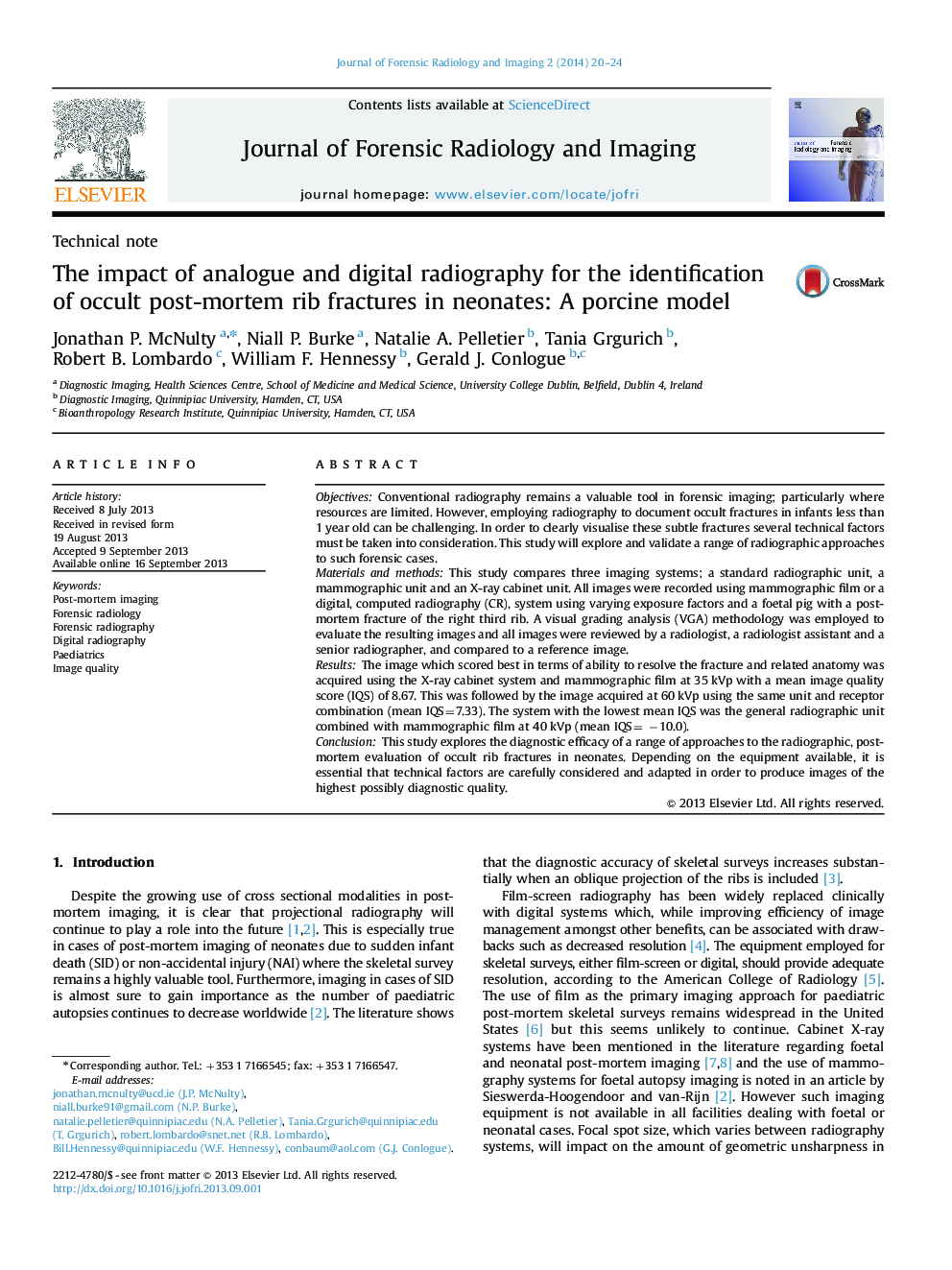| Article ID | Journal | Published Year | Pages | File Type |
|---|---|---|---|---|
| 103366 | Journal of Forensic Radiology and Imaging | 2014 | 5 Pages |
ObjectivesConventional radiography remains a valuable tool in forensic imaging; particularly where resources are limited. However, employing radiography to document occult fractures in infants less than 1 year old can be challenging. In order to clearly visualise these subtle fractures several technical factors must be taken into consideration. This study will explore and validate a range of radiographic approaches to such forensic cases.Materials and methodsThis study compares three imaging systems; a standard radiographic unit, a mammographic unit and an X-ray cabinet unit. All images were recorded using mammographic film or a digital, computed radiography (CR), system using varying exposure factors and a foetal pig with a post-mortem fracture of the right third rib. A visual grading analysis (VGA) methodology was employed to evaluate the resulting images and all images were reviewed by a radiologist, a radiologist assistant and a senior radiographer, and compared to a reference image.ResultsThe image which scored best in terms of ability to resolve the fracture and related anatomy was acquired using the X-ray cabinet system and mammographic film at 35 kVp with a mean image quality score (IQS) of 8.67. This was followed by the image acquired at 60 kVp using the same unit and receptor combination (mean IQS=7.33). The system with the lowest mean IQS was the general radiographic unit combined with mammographic film at 40 kVp (mean IQS= −10.0).ConclusionThis study explores the diagnostic efficacy of a range of approaches to the radiographic, post-mortem evaluation of occult rib fractures in neonates. Depending on the equipment available, it is essential that technical factors are carefully considered and adapted in order to produce images of the highest possibly diagnostic quality.
